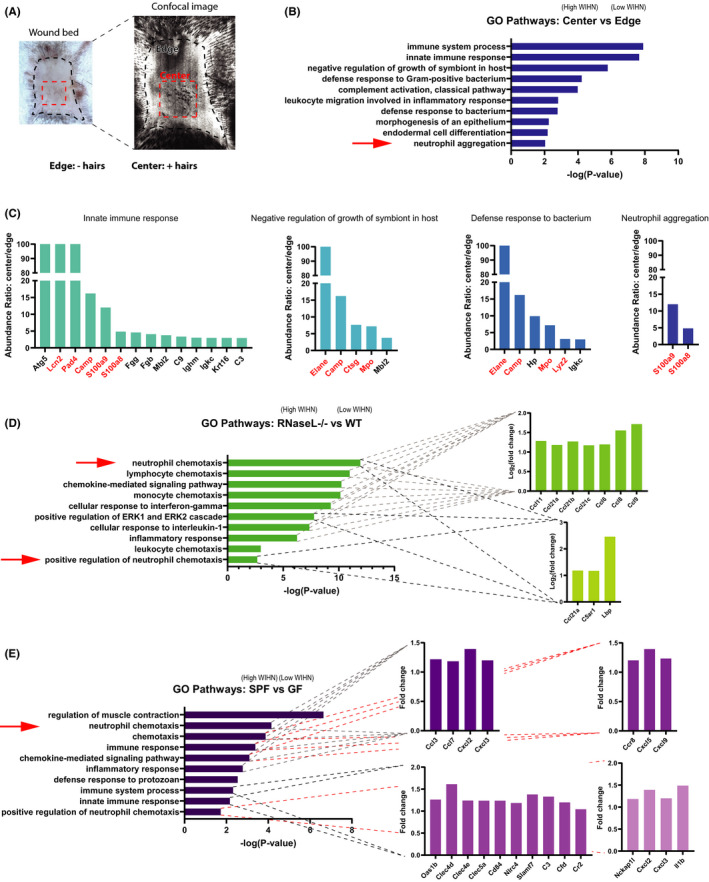FIGURE 1.

Neutrophil signatures correlate with high Wound‐induced Hair Neogenesis (WIHN) in multiple models. (A) Schematic of hair neogenesis preferential localization to wound centre (high WIHN) rather than wound edge (low WIHN); image duplicated from Figure 3F for clarity. (B) Proteomic gene ontology (GO) analysis of the top 100 genes wound centre vs. wound edge in wild‐type (WT) mice shows a predominance of innate immune response pathways and neutrophil signatures in the wound centre. (C) Abundance ratios of genes from select GO terms highlighted in b. show enrichment in the wound centre of antimicrobial and granular proteins, labelled in red. (D) GO analysis of the top 200 genes from high WIHN Rnasel−/− vs. low WIHN WT mice shows a predominance of neutrophil and innate immune cell chemotaxis pathways in Rnasel−/− mice. Inset graphs show the gene fold expression changes for genes present in that category. (E) GO enrichment analysis of the top vs. bottom 500 differentially expressed genes between specific pathogen‐free (SPF; high WIHN) and germ‐free (GF; low WIHN) mice demonstrates higher neutrophil chemotaxis and innate immune categories in SPF mice (n = 3 independent animals per group). Inset graphs show the gene fold expression changes for genes present in that category
